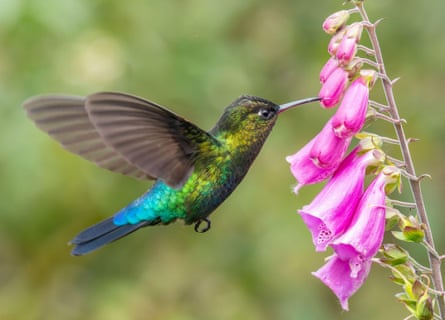Flowers ‘giving up’ on scarce bugs and evolving to self-pollinate, insist scientists – Guardian

Flowers are “giving up on” pollinators and evolving to be much less comely to them as insect numbers decline, researchers beget acknowledged.
A glance has chanced on the flora of enviornment pansies growing come Paris are 10% smaller and procure 20% much less nectar than flora growing in the the same fields 20 to 30 years ago. They’re also much less most steadily visited by bugs.
“Our glance reveals that pansies are evolving to present up on their pollinators,” acknowledged Pierre-Olivier Cheptou, indubitably some of the glance’s authors and a researcher at the French National Centre for Scientific Overview. “They’re evolving in opposition to self-pollination, where every plant reproduces with itself, which works in the brief term however would possibly presumably perhaps smartly restrict their capacity to adapt to future environmental adjustments.”
Vegetation gain nectar for bugs, and in return bugs transport pollen between vegetation. This mutually worthwhile relationship has formed over hundreds and hundreds of years of coevolution. But pansies and pollinators would possibly presumably perhaps now be caught in a vicious cycle: vegetation are producing much less nectar and this device there’ll almost definitely be much less meals on hand to bugs, which is able to in flip paddle up declines.
“Our outcomes demonstrate that the passe interactions linking pansies to their pollinators are disappearing snappy,” acknowledged lead author Samson Acoca-Pidolle, a doctoral researcher at the College of Montpellier. “We beget been shocked to search out that these vegetation are evolving so hasty.”
Insect declines beget been reported by studies across Europe. One glance on German nature reserves chanced on that from 1989 to 2016 the overall weight of bugs caught in traps fell by 75%. Acoca-Pidolle added: “Our outcomes demonstrate that the effects of pollinator declines are no longer with out anxiety reversible, because vegetation beget already started to alternate. Conservation measures are as a result of this truth urgently wished to entire and reverse pollinator declines.”
The model mature in the glance is called “resurrection ecology”. It keen germinating ancestral pansy vegetation from seeds aloof in the 1990s and 2000s, which beget been being kept in the nationwide botanical conservatories. The team in contrast how four populations of enviornment pansies (Viola arvensis) had changed all the procedure through this era.
Apart from adjustments to the flora, they chanced on no other adjustments between the populations, such because the leaf size or total size of the plant, in keeping with the paper, published in the journal Contemporary Phytologist.
If flora are no longer going to entice bugs, then a plant is losing energy making them beefy and nectar-smartly off. Previous analysis has shown the percentage of enviornment pansies relying on self-pollination has elevated by 25% over the last two decades.
after newsletter promotion
“This is an extraordinarily thrilling finding because it reveals evolution occurring in sincere time,” acknowledged Dr Philip Donkersley, from Lancaster College, who was once no longer taking into consideration about the glance.
“The real fact that these flora are altering their approach in step with reducing pollinator abundance is moderately startling. This analysis reveals a plant undoing hundreds of years of evolution in step with a phenomenon that has been around for simplest 50 years.
“Even supposing most analysis has been performed in Europe and North The united states, we all know that pollinator declines are a world phenomenon. These outcomes would possibly presumably perhaps ravishing be the tip of the iceberg: areas with a ways bigger plant selection will seemingly beget many extra examples of untamed vegetation altering their pollination suggestions in step with a lack of pollinators.”

Identical processes can even be seen in invasive populations that must adapt unique ecological niches. Populations of foxglove beget developed to be pollinated by bumblebees in Europe. Nonetheless, 200 years ago they beget been introduced to Costa Rica and Colombia, they in most cases’ve since changed the shape of their flora so that they’ll also be pollinated by hummingbirds, researchers chanced on.
Other analysis reveals vegetation that are unable to self-pollinate trot the inaccurate procedure, producing extra pollen when pollinators are scarce. Because they would possibly be able to not resort to other suggestions, they prefer to outcompete other vegetation to entice a skittish assortment of pollinators.
Prof Phil Stevenson, from Royal Botanic Gardens, Kew, who was once moreover no longer taking into consideration about the analysis, acknowledged it made sense that traits that manual or reward pollinators tend to alternate when the assortment of pollinators drops, in particular among species that beget the choice of self-pollinating.
“This is in particular so for replica,” he acknowledged, “which is arguably the supreme residing feature of organisms and seemingly the most adaptive trait of all.”
-
Receive extra age of extinction coverage here, and apply biodiversity journalists Phoebe Weston and Patrick Greenfield on X to your total latest files and parts

